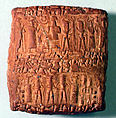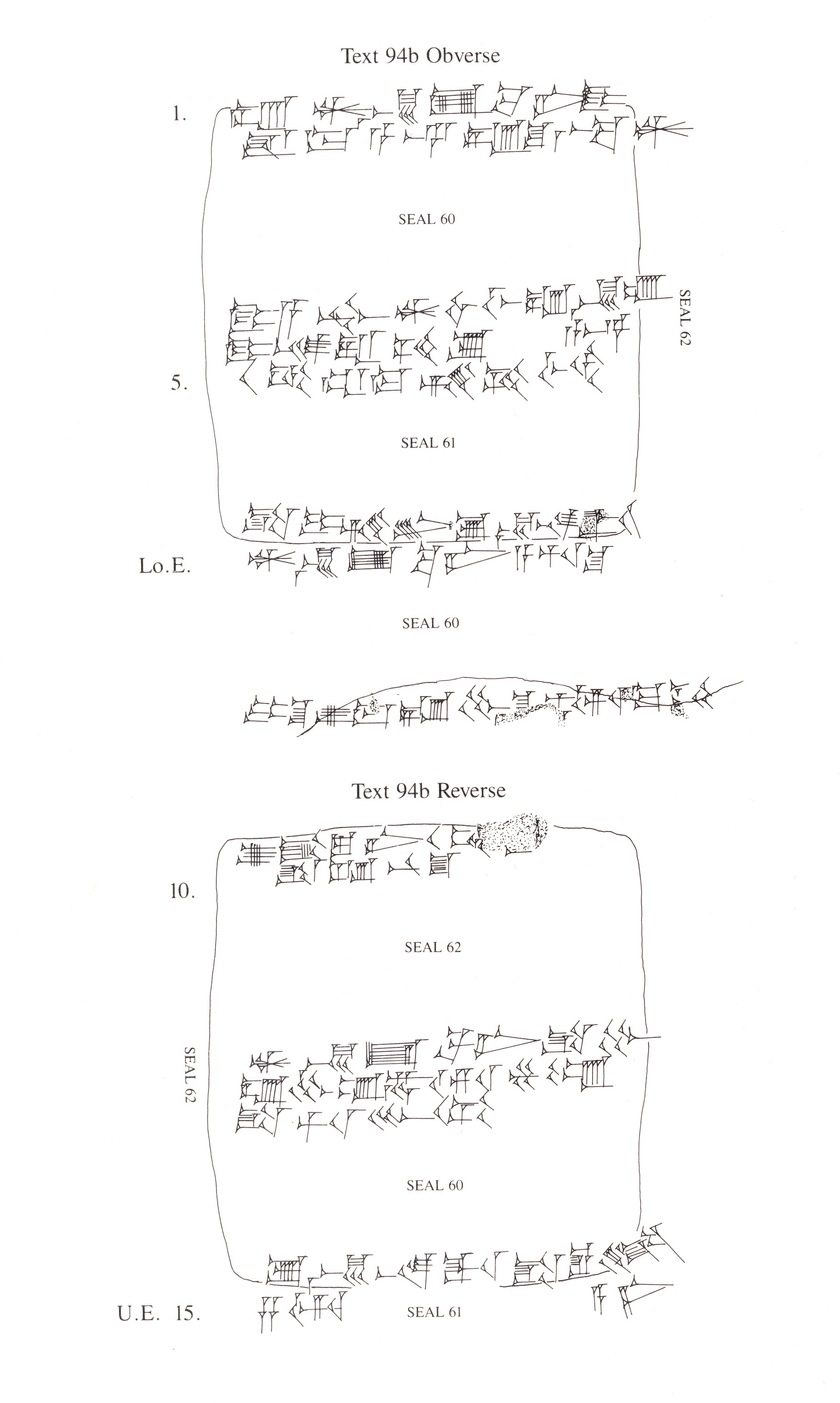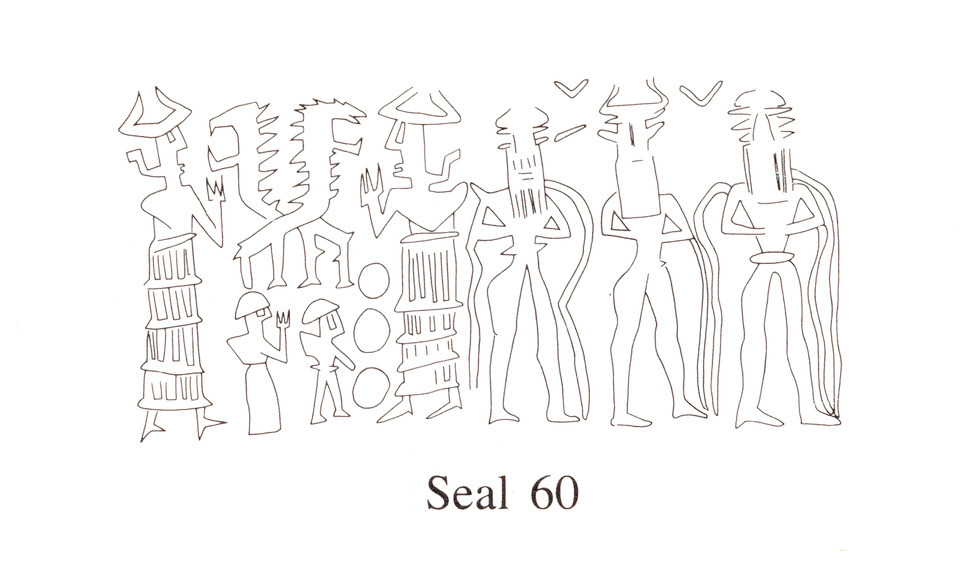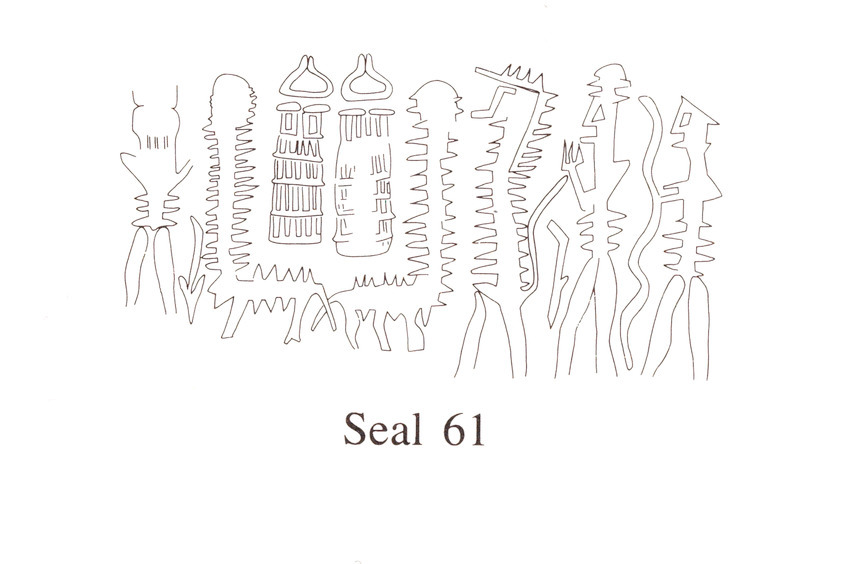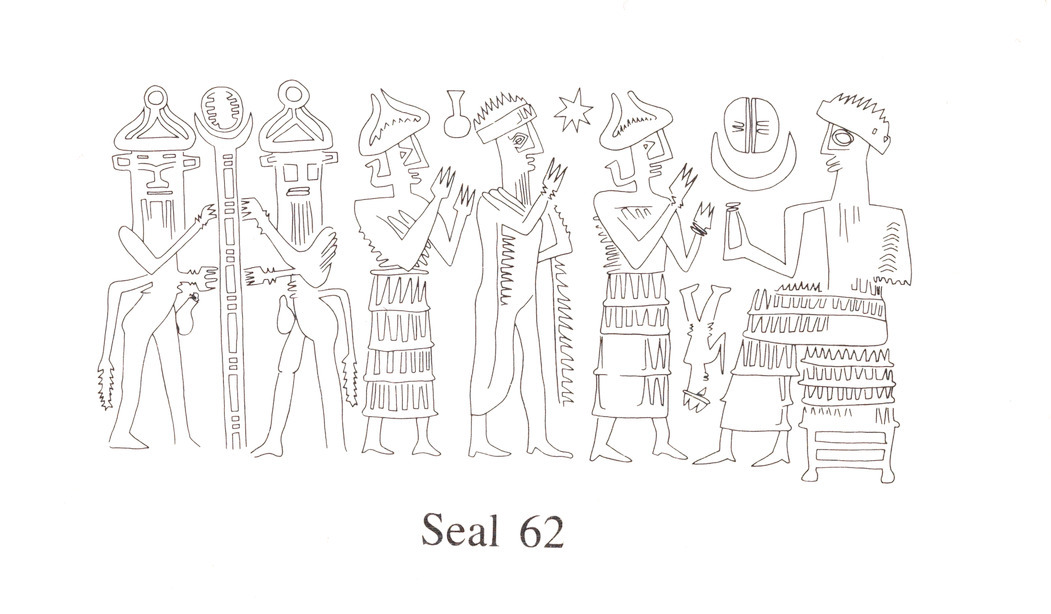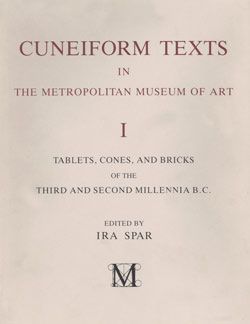Cuneiform tablet case impressed with three cylinder seals, for cuneiform tablet 66.246.18a: quittance for a loan in copper
Not on view
Kültepe, the ancient city of Kanesh, was a powerful and cosmopolitan city located in northern Cappadocia in central Anatolia, modern Turkey. During the early second millennium B.C., it became part of the network of trading settlements (Akkadian: karum) established across the region by merchants from Ashur (in Assyria in northern Mesopotamia, modern Iraq). Travelling long distances by donkey caravan, and often living separately from their families, these merchants traded vast quantities of tin and textiles for gold and silver in addition to controlling the copper trade within Anatolia itself. Although the merchants adopted many aspects of local Anatolian life, they brought with them Mesopotamian tools used to record transactions: cuneiform writing, clay tablets and envelopes, and cylinder seals. Using a simplified version of the elaborate cuneiform writing system, merchants tracked loans as well as business deals and disputes, and sent letters to families and business partners back in Ashur. These texts also provide information about the greater political history of Ashur and the Anatolian city-states as well as details about the daily life of Assyrians and Anatolians who not only worked side-by-side, but also married and had children together. At Kültepe, thousands of these texts stored in household archives were preserved when fire destroyed the city in ca. 1836 B.C. and provide a glimpse into the complex and sophisticated commercial and social interactions that took place in the Near East during the beginning of the second millennium B.C.
This sealed clay envelope or case contained a tablet documenting the discharge from debt for a copper loan owed to Enlil-bani. The contents of the tablet was repeated on the envelope, in order to verify the decision regarding the loan repayment without tampering with the document inside. Text on the envelope, read from left to right, must have been written after the original text was placed inside the case. The three seal impressions on the sides and edges of the tablet all belong to seals carved in the linear Old Assyrian style displaying traditional Mesopotamian scenes. An impression present on both the front and back of the tablet depicts two nude bearded heroes, with streams of water flowing from the shoulders, flanking a frontal bullman. Two suppliant goddesses flanking a double register of rampant felines complete the scene. The other impression on the front of the tablet depicts a hero grasping a snake while a second hero wrestles a rampant feline. Two human-headed bulls with frontal faces stand opposed as another hero wrestles the one on the left. The highly linear and almost abstract rendering of the figures and faces is common in glyptic art from Kanesh. The impression appearing on the back of the tablet depicts a typical presentation scene with an interceding goddess leading a bearded male figure toward a seated deified king who sits below a cross-disk in a moon crescent. Two bullmen hold a standard topped with the same motif. Common filler motifs of a star, small upside-down man, and vessel can be seen the field.
This image cannot be enlarged, viewed at full screen, or downloaded.
This artwork is meant to be viewed from right to left. Scroll left to view more.
